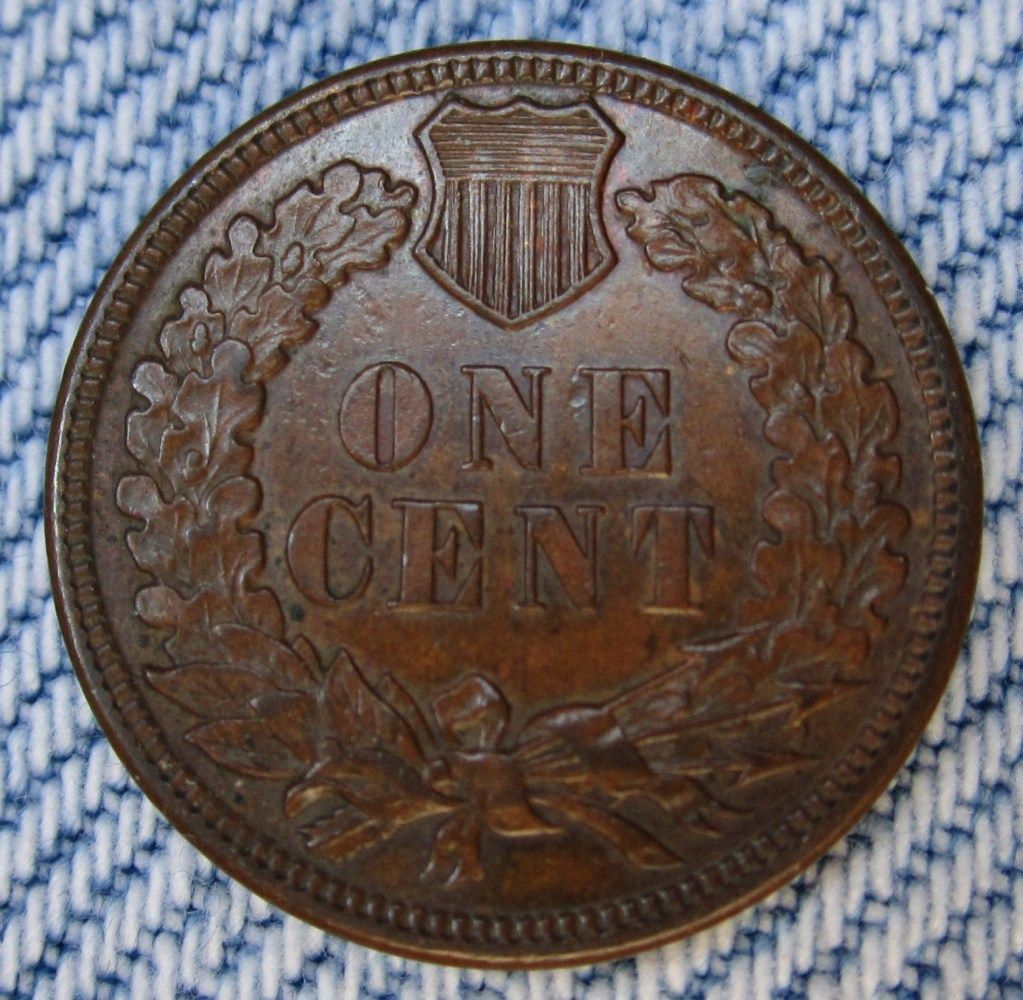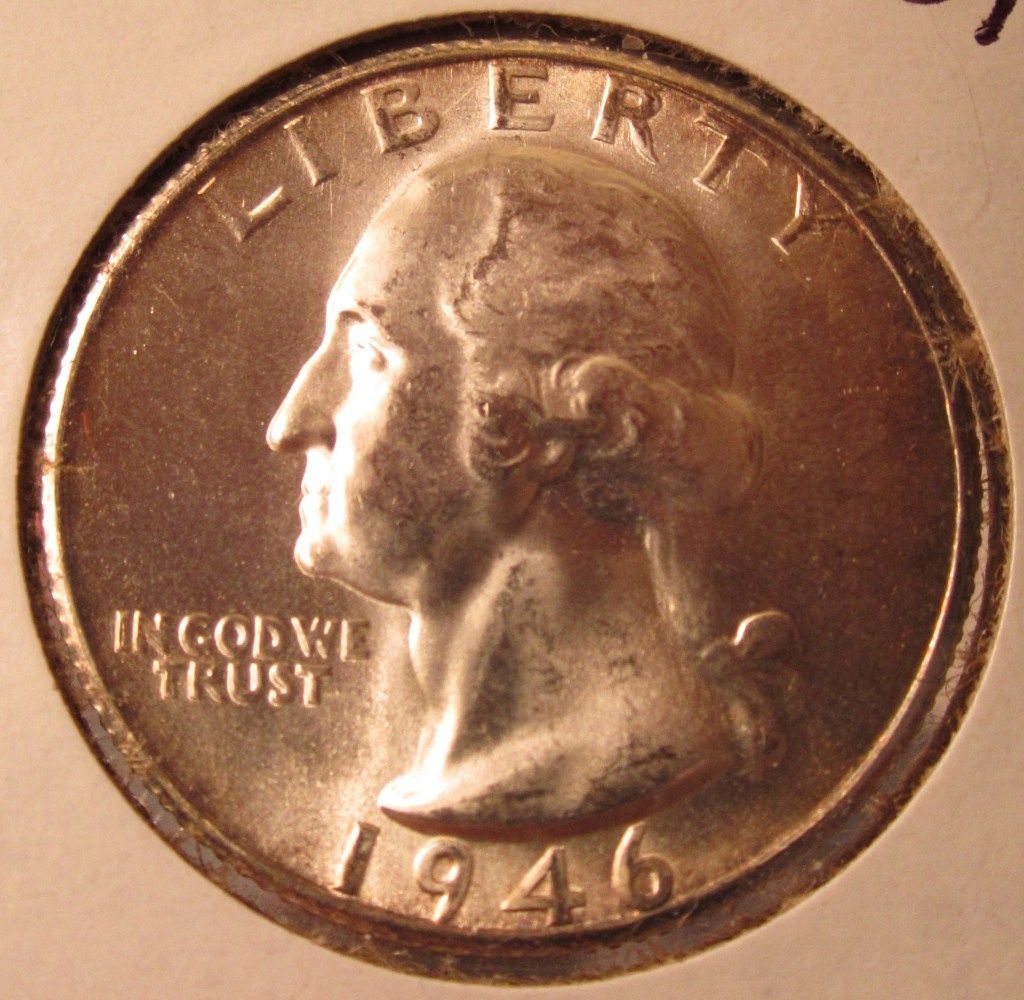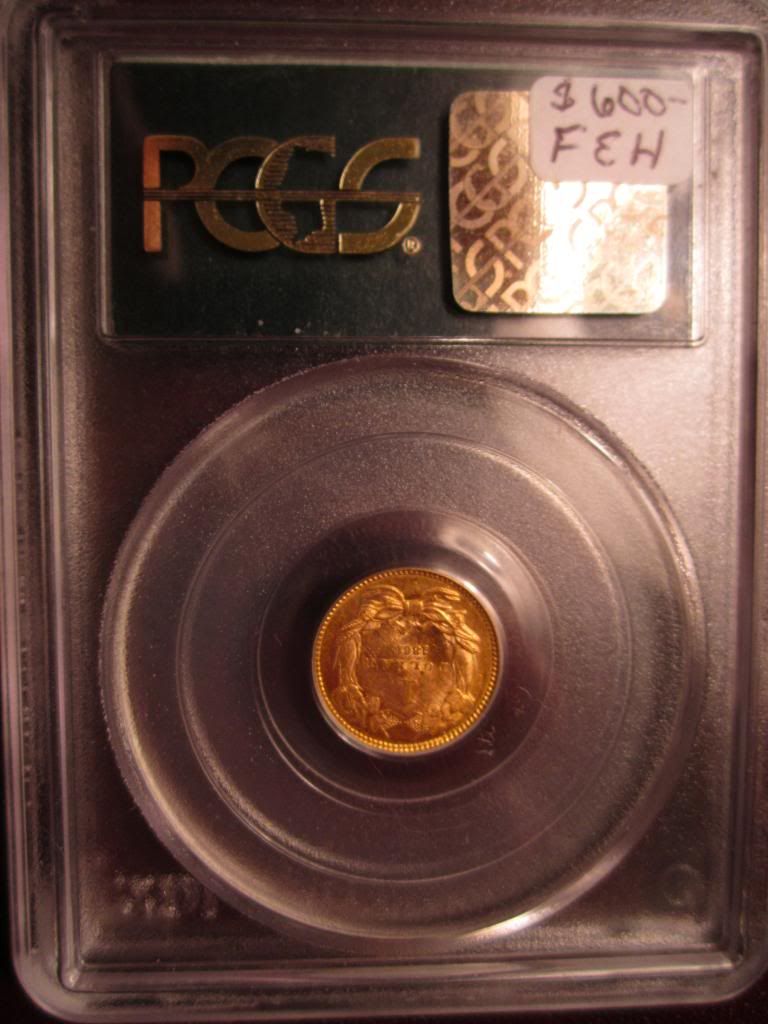Options
Artificial Toning or Original?
a 1926-s Peace dollar. Looking straight on you see hints of color and turned at different angles the colors come and go. Anybody seen toning like this? in hand a lot of luster and the colors gradually blend and are not seperated as seen in the photo.








0
Comments
RMR: 'Wer, wenn ich schriee, hörte mich denn aus der Engel Ordnungen?'
CJ: 'No one!' [Ain't no angels in the coin biz]
bob
-Paul
<< <i>It looks blatantly AT to me. The color progressions are wrong among other things. >>
I agree with this. The toning seems like it's "floating" ie there isn't a difference between the fields and the devices as the toning floats over the hills and valleys.
jom
TRUTH
AT
Lance.
https://www.pcgs.com/setregistry/quarters/washington-quarters-major-sets/washington-quarters-date-set-circulation-strikes-1932-present/publishedset/209923
https://www.pcgs.com/setregistry/quarters/washington-quarters-major-sets/washington-quarters-date-set-circulation-strikes-1932-present/album/209923
Recipient of the coveted "You Suck" award, April 2009 for cherrypicking a 1833 CBHD LM-5, and April 2022 for a 1835 LM-12, and again in Aug 2012 for picking off a 1952 FS-902.
"Seu cabra da peste,
"Sou Mangueira......."
Then when it comes to attributing a coins as AT or NT, along with the assignment should be the type of NT or AT.
It is a disservice to describe a coin as AT without mentioning the method of AT involved. If one cannot specify the method of AT then perhaps they should not make it a habit of offering their opinion on AT or NT coins.
rainbowroosie April 1, 2003
<< <i>I would not buy that coin. >>
Not even for less than the metal value?
Many things "wrong" with it. Unnatural color progression, seems to "float" on the coin (rather than changing with the relief/devices), colors like that just dont show up on circulated pieces of this kind, etc
<< <i>First we need to delineate what is considered AT. ie. give strict definitions to each type of toning and whether it is to be considered artificial or natural.
Then when it comes to attributing a coins as AT or NT, along with the assignment should be the type of NT or AT.
It is a disservice to describe a coin as AT without mentioning the method of AT involved. If one cannot specify the method of AT then perhaps they should not make it a habit of offering their opinion on AT or NT coins. >>
There are many ways to at a coin, some methods of which we dont have access to the knowledge of how someone ats a coin. However, we do know of how coins can naturally tone: bags, albums, envelopes, ect. And we know the results of those as the commonly accepted naturally toned look. What you can say about a coin that is artificially toned is that it does not share a commonly accepted look of a naturally toned coin. A good analogy is: When you buy a used car, if you notice damage or a problem with the way it drives. You dont know what caused it but know it is not driving like an in-tune car should be. Was it flooded out? Was it in a wreck before you bought it? You may never know. Nor is it relevant to you, the buyer. You simply have the plain fact that it is not a good car to buy.
<< <i>It is a disservice to describe a coin as AT without mentioning the method of AT involved. If one cannot specify the method of AT then perhaps they should not make it a habit of offering their opinion on AT or NT coins. >>
It does not matter what method was employed, it matters only what the coin looks like. And this one looks like a piece that has no chance to be considered market acceptable by the grading services.
<< <i>
<< <i>First we need to delineate what is considered AT. ie. give strict definitions to each type of toning and whether it is to be considered artificial or natural.
Then when it comes to attributing a coins as AT or NT, along with the assignment should be the type of NT or AT.
It is a disservice to describe a coin as AT without mentioning the method of AT involved. If one cannot specify the method of AT then perhaps they should not make it a habit of offering their opinion on AT or NT coins. >>
There are many ways to at a coin, some methods of which we dont have access to the knowledge of how someone ats a coin. However, we do know of how coins can naturally tone: bags, albums, envelopes, ect. And we know the results of those as the commonly accepted naturally toned look. What you can say about a coin that is artificially toned is that it does not share a commonly accepted look of a naturally toned coin. A good analogy is: When you buy a used car, if you notice damage or a problem with the way it drives. You dont know what caused it but know it is not driving like an in-tune car should be. Was it flooded out? Was it in a wreck before you bought it? You may never know. Nor is it relevant to you, the buyer. You simply have the plain fact that it is not a good car to buy. >>
Perhaps, perhaps.
I would like to take this one step further. As a numismatist, is it possible that you SHOULD be more concerned with the METHOD of toning instead of the APPEARANCE of the coin. As experts of our trade, is it not our duty to be more concerned with the specific methods in which a coin has been altered from it's original state, whether natural or artificial. Instead of concerning ourselves with just the "appearance" of the coin to the eye?
<< <i>
<< <i>
<< <i>First we need to delineate what is considered AT. ie. give strict definitions to each type of toning and whether it is to be considered artificial or natural.
Then when it comes to attributing a coins as AT or NT, along with the assignment should be the type of NT or AT.
It is a disservice to describe a coin as AT without mentioning the method of AT involved. If one cannot specify the method of AT then perhaps they should not make it a habit of offering their opinion on AT or NT coins. >>
There are many ways to at a coin, some methods of which we dont have access to the knowledge of how someone ats a coin. However, we do know of how coins can naturally tone: bags, albums, envelopes, ect. And we know the results of those as the commonly accepted naturally toned look. What you can say about a coin that is artificially toned is that it does not share a commonly accepted look of a naturally toned coin. A good analogy is: When you buy a used car, if you notice damage or a problem with the way it drives. You dont know what caused it but know it is not driving like an in-tune car should be. Was it flooded out? Was it in a wreck before you bought it? You may never know. Nor is it relevant to you, the buyer. You simply have the plain fact that it is not a good car to buy. >>
Perhaps, perhaps.
I would like to take this one step further. As a numismatist, is it possible that you SHOULD be more concerned with the METHOD of toning instead of the APPEARANCE of the coin. As experts of our trade, is it not our duty to be more concerned with the specific methods in which a coin has been altered from it's original state, whether natural or artificial. Instead of concerning ourselves with just the "appearance" of the coin to the eye? >>
Considering the methods to at are dynamic, i.e. Evolving, while the proper look for a naturally toned coin based on known toning sources is static, the more reliable and consistent method of determining at vs nt is by knowing what is real to determine what is fake. You dont spot a counterfeit coin without knowing what a real one should look like.
<< <i>
<< <i>
<< <i>
<< <i>First we need to delineate what is considered AT. ie. give strict definitions to each type of toning and whether it is to be considered artificial or natural.
Then when it comes to attributing a coins as AT or NT, along with the assignment should be the type of NT or AT.
It is a disservice to describe a coin as AT without mentioning the method of AT involved. If one cannot specify the method of AT then perhaps they should not make it a habit of offering their opinion on AT or NT coins. >>
There are many ways to at a coin, some methods of which we dont have access to the knowledge of how someone ats a coin. However, we do know of how coins can naturally tone: bags, albums, envelopes, ect. And we know the results of those as the commonly accepted naturally toned look. What you can say about a coin that is artificially toned is that it does not share a commonly accepted look of a naturally toned coin. A good analogy is: When you buy a used car, if you notice damage or a problem with the way it drives. You dont know what caused it but know it is not driving like an in-tune car should be. Was it flooded out? Was it in a wreck before you bought it? You may never know. Nor is it relevant to you, the buyer. You simply have the plain fact that it is not a good car to buy. >>
Perhaps, perhaps.
I would like to take this one step further. As a numismatist, is it possible that you SHOULD be more concerned with the METHOD of toning instead of the APPEARANCE of the coin. As experts of our trade, is it not our duty to be more concerned with the specific methods in which a coin has been altered from it's original state, whether natural or artificial. Instead of concerning ourselves with just the "appearance" of the coin to the eye? >>
Considering the methods to at are dynamic, i.e. Evolving, while the proper look for a naturally toned coin based on known toning sources is static, the more reliable and consistent method of determining at vs nt is by knowing what is real to determine what is fake. You dont spot a counterfeit coin without knowing what a real one should look like. >>
Again, you do make alot of sense. I like your style.
In addition most 26-S toners are rim toners and are vivid, they dont need much if any tilting.
As for AT or NT with peace dollars you cant really tell
<< <i>
<< <i>
<< <i>
<< <i>
<< <i>First we need to delineate what is considered AT. ie. give strict definitions to each type of toning and whether it is to be considered artificial or natural.
Then when it comes to attributing a coins as AT or NT, along with the assignment should be the type of NT or AT.
It is a disservice to describe a coin as AT without mentioning the method of AT involved. If one cannot specify the method of AT then perhaps they should not make it a habit of offering their opinion on AT or NT coins. >>
There are many ways to at a coin, some methods of which we dont have access to the knowledge of how someone ats a coin. However, we do know of how coins can naturally tone: bags, albums, envelopes, ect. And we know the results of those as the commonly accepted naturally toned look. What you can say about a coin that is artificially toned is that it does not share a commonly accepted look of a naturally toned coin. A good analogy is: When you buy a used car, if you notice damage or a problem with the way it drives. You dont know what caused it but know it is not driving like an in-tune car should be. Was it flooded out? Was it in a wreck before you bought it? You may never know. Nor is it relevant to you, the buyer. You simply have the plain fact that it is not a good car to buy. >>
Perhaps, perhaps.
I would like to take this one step further. As a numismatist, is it possible that you SHOULD be more concerned with the METHOD of toning instead of the APPEARANCE of the coin. As experts of our trade, is it not our duty to be more concerned with the specific methods in which a coin has been altered from it's original state, whether natural or artificial. Instead of concerning ourselves with just the "appearance" of the coin to the eye? >>
Considering the methods to at are dynamic, i.e. Evolving, while the proper look for a naturally toned coin based on known toning sources is static, the more reliable and consistent method of determining at vs nt is by knowing what is real to determine what is fake. You dont spot a counterfeit coin without knowing what a real one should look like. >>
Again, you do make alot of sense. I like your style. >>
Thank you. I do appreciate your call that more investigation be done as to the methods used by doctors to at coins. However, the downside by making their methods known and pointing out their flaws is that it only helps the doctor make more believable color to the untrained eye. We point out the obvious tells and the doctor modifies his process to fix what we point out. That is a bad side effect that nobody wants. In this case the road to that hell would be paved by good intentions.
However here are a couple others, as you can see their toning is wild at times and doesn't follow predictable patterns
These ones are one sided
Mike
<< <i>No tar, no feathers Joe.... we all have opinions...
Thank you for that I was worried a bit....
RIP Mom- 1932-2012
<< <i>I think it's really nice looking & very pretty. But David Hall says there is no such thing as a rainbow toned peace dollar! Just thought I'ld throw that in.... >>
That is not really what he said.
Rainbow Stars
Ricko
in his coin laboratory,
brewing up some rainbow peace dollars?